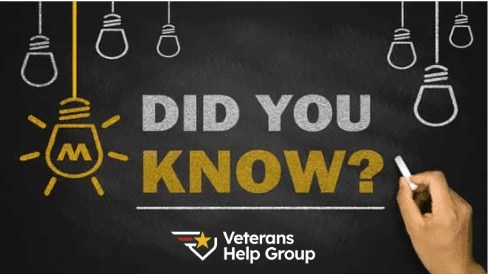VETERANS HELP GROUP
We Will Fight For you
The Ultimate Guide to Agent Orange VA Disability
Millions of U.S. veterans have potentially been exposed to Agent Orange, an herbicide used by the U.S. military to clear vegetation. Until recently, most of the attention on Agent Orange revolved around its use during the Vietnam War. However, members of the military may also have been exposed in other locations, including Thailand, Korea, and Guam. Here’s what you need to know about Agent Orange exposure, the medical conditions it may cause, and how to pursue VA disability benefits if you’ve been affected by Agent Orange.
How is Agent Orange Harmful?
2,3,7,8-tetrachlorodibenzo-p-dioxin (TCDD) is a byproduct of the active ingredients in Agent Orange. The substance is highly toxic. More than 10 million gallons of Agent Orange were sprayed in Vietnam alone. Numerous medical conditions, including several cancers, have been connected to Agent Orange exposure.
A veteran may be eligible for VA disability benefits if they were exposed to Agent Orange and now suffer from a medical condition that has been connected to Agent Orange. Thanks to the Blue Water Navy Vietnam Veterans Act of 2019 and the Honoring Our Pact Act of 2022, many veterans are presumed to have been exposed to Agent Orange. And, many conditions are presumed to be service-connected for veterans who were exposed to Agent Orange.
Veterans Disability Benefits for Agent Orange Related Conditions
Presumed Agent Orange Exposure
Veterans who served in certain areas during certain time periods are presumed to have been exposed to Agent Orange.
These include:
- Veterans who served in the Republic of Vietnam between January 9, 1962 and May 7, 1975
- Veterans who served on a military vessel that operated on the inland waterways of Vietnam between January 9, 1962 and May 7, 1975
- Veterans who served on a military vessel within 12 nautical miles seaward from the demarcation line between Vietnam and Cambodia between January 9, 1962, and May 7, 1975
- Veterans who served on a U.S. or Royal Thai military base between January 9, 1962, and June 30, 1976
- Veterans who served in Laos between December 1, 1975, and September 30, 1969
- Veterans who served in Cambodia at Mimot or Krek, Kampong Cham Province between April 16, 1969, and April 30, 1969
- Veterans who served in Guam or American Samos between January 9, 1962, and July 31, 1980
- Veterans who served in the territorial waters off of Guam or American Samoa between January 9, 1962, and July 31, 1980
- Veterans who served at Johnston Atoll or on a ship that called there between January 1, 1972, and September 30, 1977
- Veterans who served in or near the Korean DMZ between September 1, 1967, and August 31, 1971
- Veterans who served in a regular Air Force unit location where a C-123 aircraft with traces of Agent Orange was assigned, and had repeated duty-related contact with the plane
- Veterans who worked with Agent Orange during their military service, including transporting, testing, and storing Agent Orange
- Reservists assigned to certain flights, ground, and medical crew duties at Lockbourne/Rickenbacker Air Force Base between 1969 and 1986
- Reservists assigned to certain flights, ground, and medical crew duties at Westover Air Force Base between 1972 and 1982
Note that some of these presumptions require only evidence that you served in a certain place at a certain time, while others require additional information about your duties at that location. In most cases, you will be able to use military records to establish the location where you served and your assigned duties, but it is your responsibility to demonstrate both. And, you may be unsure whether the location of a ship you served on falls within the boundaries set forth above. An experienced VA disability benefits advocate can help you assess your eligibility and ensure that you have all of the documentation required to support your claim.
Conditions Presumed Connected to Agent Orange Exposure
Quite a few conditions are presumptively service-connected for veterans with Agent Orange exposure.
These include:
- Bladder cancer
- Prostate cancer
- Respiratory cancers
- Hodgkin’s disease
- Non-Hodgkin’s lymphoma
- Multiple myeloma
- Chronic B-cell leukemia
- Certain soft tissue sarcomas
- Hypothyroidism
- Hypertension
- AL amyloidosis
- Chloracne
- Type II diabetes
- Ischemic heart disease
- Monoclonal gammopathy of undetermined significance
- Parkinsonism
- Parkinson’s disease
- Early onset peripheral neuropathy
- Porphyria cutanea tarda
If your condition isn’t listed, don’t worry. Even if your condition isn’t presumed service-connected, you may be able to establish a service connection. The process is a bit more complicated since it will be up to you to prove that there is a connection between Agent Orange exposure and your medical condition. The key piece of evidence is typically a nexus letter from a qualified medical professional.
Secondary Service Connections
When you’re preparing to file a claim for veterans disability benefits based on Agent Orange exposure, it’s important to make sure you also include any other service-connected conditions. This includes conditions with a secondary connection. For example, sleep apnea and heart failure are both possible conditions secondary to ischemic heart disease. If your ischemic heart disease is service-connected and you developed one of these conditions secondary to your ischemic heart disease, those conditions should also be considered. This matters because VA disability benefits vary considerably depending on your disability rating. Leaving out service-connected or secondary service-connected conditions can lower your disability rating and reduce the benefits you receive.
Veterans Benefits for Children Disabled Due to Parental Exposure
Some toxic exposure, including Agent Orange exposure, can have an impact on a veteran’s future children. Eligibility for these benefits is more limited than eligibility for veterans who were exposed to Agent Orange. Generally, a child with spina bifida may qualify for benefits if either biological parent served in Vietnam between January 9, 1962 and May 7, 1975, or in the Korean demilitarized zone between September 1, 1967 and August 31, 1971. Children with certain other birth defects may be eligible if their biological mother served in Vietnam between February 28, 1961, and May 7, 1975.
An eligible child may receive monetary benefits, healthcare services, and vocational services.
Pursuing VA Disability Benefits After Agent Orange Exposure
For far too long, many victims of Agent Orange exposure were denied the benefits they deserve. Over the past few years, new legislation has made it much easier for certain veterans who became ill due to Agent Orange exposure to pursue benefits. If you haven’t applied because you didn’t think you were qualified or were denied years ago before the current lists of presumptive service connections took effect, now is the time to fight for what you’ve earned.
The experienced veterans disability benefits at Veterans Help Group have worked with thousands of disabled veterans and family members. We know what’s necessary to establish a service connection, and how to ensure that you have the right evidence to support an appropriate disability rating. To learn more about how we can help with your Agent Orange claim or appeal, call us right now at (855) 855-8992 or contact us here now.
WHAT OUR CLIENTS SAY
FREE CASE EVALUATION
"*" indicates required fields







